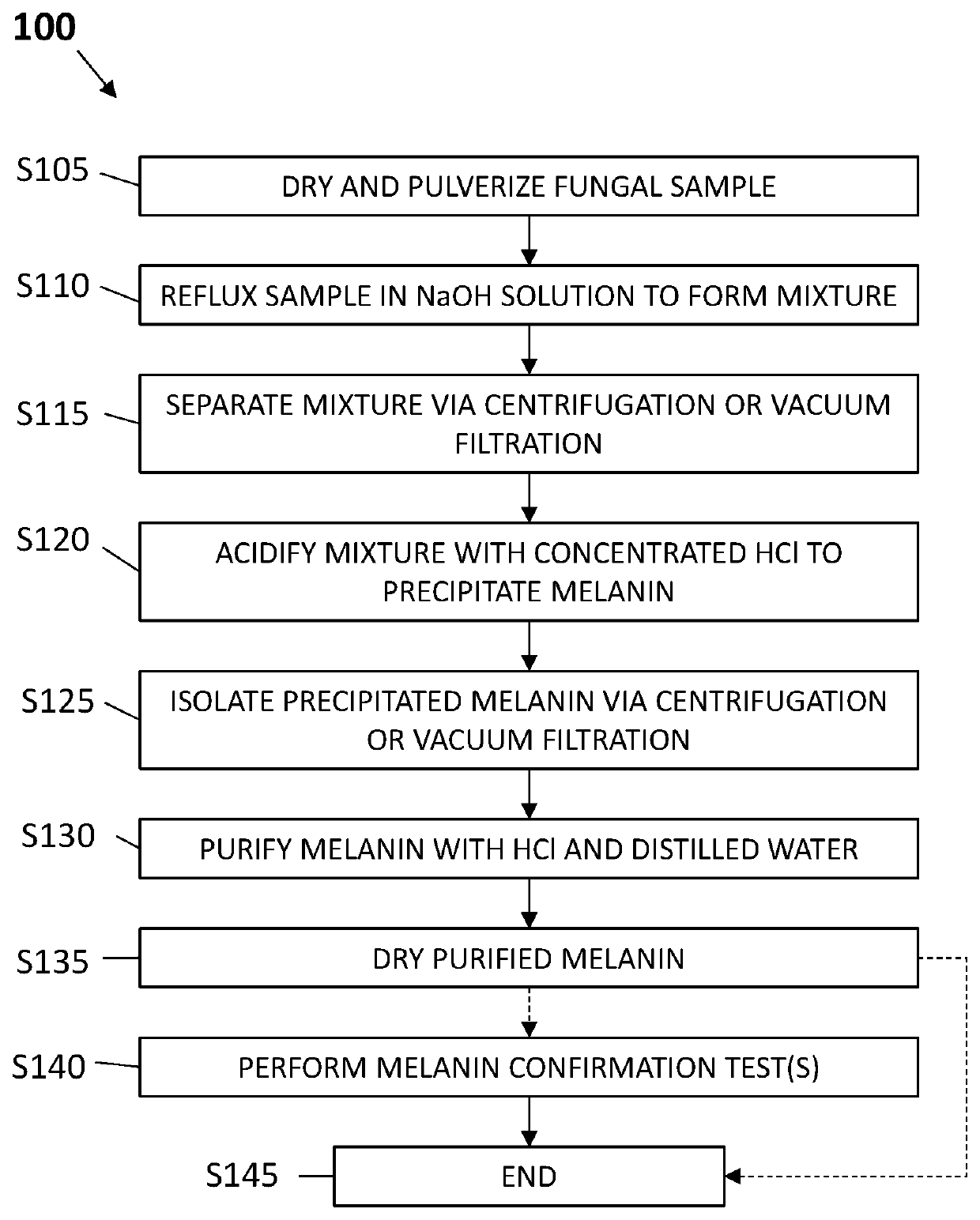Methods for extraction of melanin from fungal species
a technology of melanin and fungi, which is applied in the field of methods for extracting melanin from fungi samples, can solve the problems of high cost of enzymes in such a process, high cost of dialysis steps, and low efficiency of melanin extraction methods, and achieves the effects of reducing the number of methods
- Summary
- Abstract
- Description
- Claims
- Application Information
AI Technical Summary
Benefits of technology
Problems solved by technology
Method used
Image
Examples
example 1
[0031]A sample of chaga mushroom was finely pulverized and combined with 1M NaOH in a round bottom flask in a ratio of approximately 0.06 g / mL. The resulting mixture was then refluxed for 2 hours at 100° C. in a mineral oil bath over a hot plate equipped with stirring. The mixture was then centrifuged at 4500 RCF for 15 minutes to separate a supernatant containing the melanin extract and a solid pellet. The supernatant (melanin extract) was pipetted out and the solid was discarded. The melanin extract was then acidified using 10% HCl to lower the pH in the liquid to approximately 2. The acidified melanin extract then underwent a vacuum filtration with a 0.22-micron filter paper to separate the solid (melanin) and liquid. The liquid was then discarded. Finally, the melanin was purified via washing (centrifugation) 3 times with 0.15M HCl and subsequently 2 times with deionized, distilled water to dilute any remaining HCl or remove other impurities.
example 2
[0032]In this example, melanin was extracted from a sample of chaga mushroom using the method described in Example 1. Additionally, melanin was extracted from a sample of three other species of fungi, Fomes fomentarius, Phellinus igniarius, and Ganoderma tsugae, using the same method as used for the extraction of melanin from the chaga mushroom in Example 1. The extraction methods for Fomes fomentarius, Phellinus igniarius, and Ganoderma tsugae resulted in 12%, 14%, and 3.5% yields of melanin, respectively ([mass of the extracted melanin substance / mass of the sample]×100). Surprisingly, the extraction method for the chaga mushroom resulted in approximately a 24% yield of melanin from the chaga mushroom sample. As such, the present method was shown to provide unexpected increased yield in melanin from chaga mushroom samples.
[0033]Overall, the methods of the present application provide an effective and efficient way for extracting melanin from fungal samples, and in particularly, fung...
PUM
 Login to View More
Login to View More Abstract
Description
Claims
Application Information
 Login to View More
Login to View More - R&D
- Intellectual Property
- Life Sciences
- Materials
- Tech Scout
- Unparalleled Data Quality
- Higher Quality Content
- 60% Fewer Hallucinations
Browse by: Latest US Patents, China's latest patents, Technical Efficacy Thesaurus, Application Domain, Technology Topic, Popular Technical Reports.
© 2025 PatSnap. All rights reserved.Legal|Privacy policy|Modern Slavery Act Transparency Statement|Sitemap|About US| Contact US: help@patsnap.com

